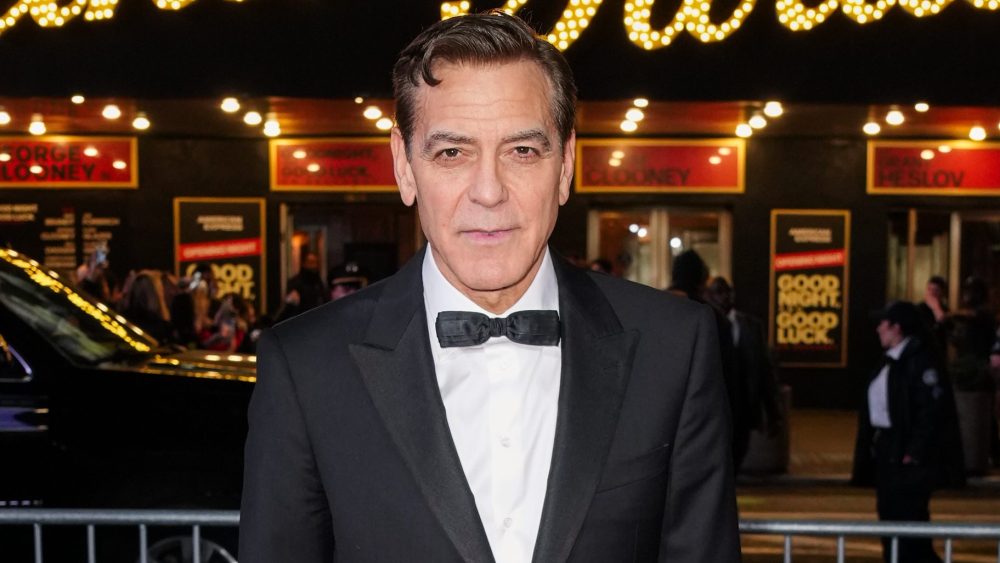Opening Night of “Good Night, and Good Luck” on Broadway
Located seven rows from the front at the Broadway performance of “Good Night, and Good Luck,” the scent of prop cigarette smoke fills the air.
The opening night at the Winter Garden Theatre in New York highlighted cigarettes and the waning relevance of the Fourth Estate. While many celebrities were spotted with vapes, journalists in attendance reacted to George Clooney’s impassioned plea amidst a challenging atmosphere of scrutiny.
Among the notable figures present were Jake Tapper, George Stephanopoulos, Lesley Stahl, Chris Wallace, Rachel Maddow, and CBS chief George Cheeks, mingling alongside stars like Drew Barrymore, Uma Thurman, and Lorne Michaels. The red carpet spectacle attracted thousands of fans, highlighted by Jennifer Lopez’s stunning black gown with a flowing white cape, as she made an entrance alongside Clooney, her “Out of Sight” co-star.
Theatrical Adaptation’s Emotional Depth
“Good Night, and Good Luck” is primarily a faithful adaptation of the 2005 film that depicts Edward R. Murrow’s televised confrontation with Senator Joseph McCarthy during the Red Scare. However, the play includes a few significant additions that resonate with the current challenges facing journalism today.
According to Grant Heslov, Clooney’s long-time producing partner and co-writer, “The play is more emotional than the film,” noting that the ending diverges notably from the original movie.
In a pivotal scene, CBS president William Paley asserts, “We don’t make the news, we report the news,” but Paul Gross’ portrayal adds layers by critiquing the legacy Murrow’s actions have left for future journalists.
The Modern Journalistic Landscape
The production culminates in an impactful, montage-like finale, showcasing defining moments in broadcast journalism. Starting with historical highlights such as the Moon Landing and Reagan’s “Tear Down This Wall” speech, the footage becomes increasingly intense and sensationalized as it approaches the present day.
Clark Gregg, who plays journalist Don Hollenbeck, remarked on the larger issue at play: “Is it solely about profit? Shouldn’t seeking the truth come first?” His commentary reflects the urgent dilemmas facing the field of journalism.
As the traditional media landscape faces challenges, Clooney’s play resonates particularly with the current climate, especially as the Trump administration threatens to cut federal funding for key media organizations. Legacy news programs, such as “CBS Evening News,” struggle to retain viewership in a fragmented media environment.
Reflections on Truth and Media Trust
Journalists including Tapper pointed out the stark contrast to Murrow’s era, stating, “When Murrow was on air, he drew an audience of around 40 million. There were only a few channels, and he was the singular voice.” This reality accentuates today’s media fragmentation, complicating the search for truth.
As reported by Gallup, trust in the media among Americans was recorded at 68% in 1972 but dropped to a historic low of 31% in 2024, shining a light on the systemic issues highlighted in the play regarding the blurring lines between corporate interests and editorial integrity.
After his Broadway debut, Clooney briefly walked the carpet, citing his wife Amal’s absence with a smile and a quip about their children. The evening concluded with a celebratory afterparty at the New York Public Library, attended by friends and former “ER” co-stars, sharing in the success of the landmark night.



